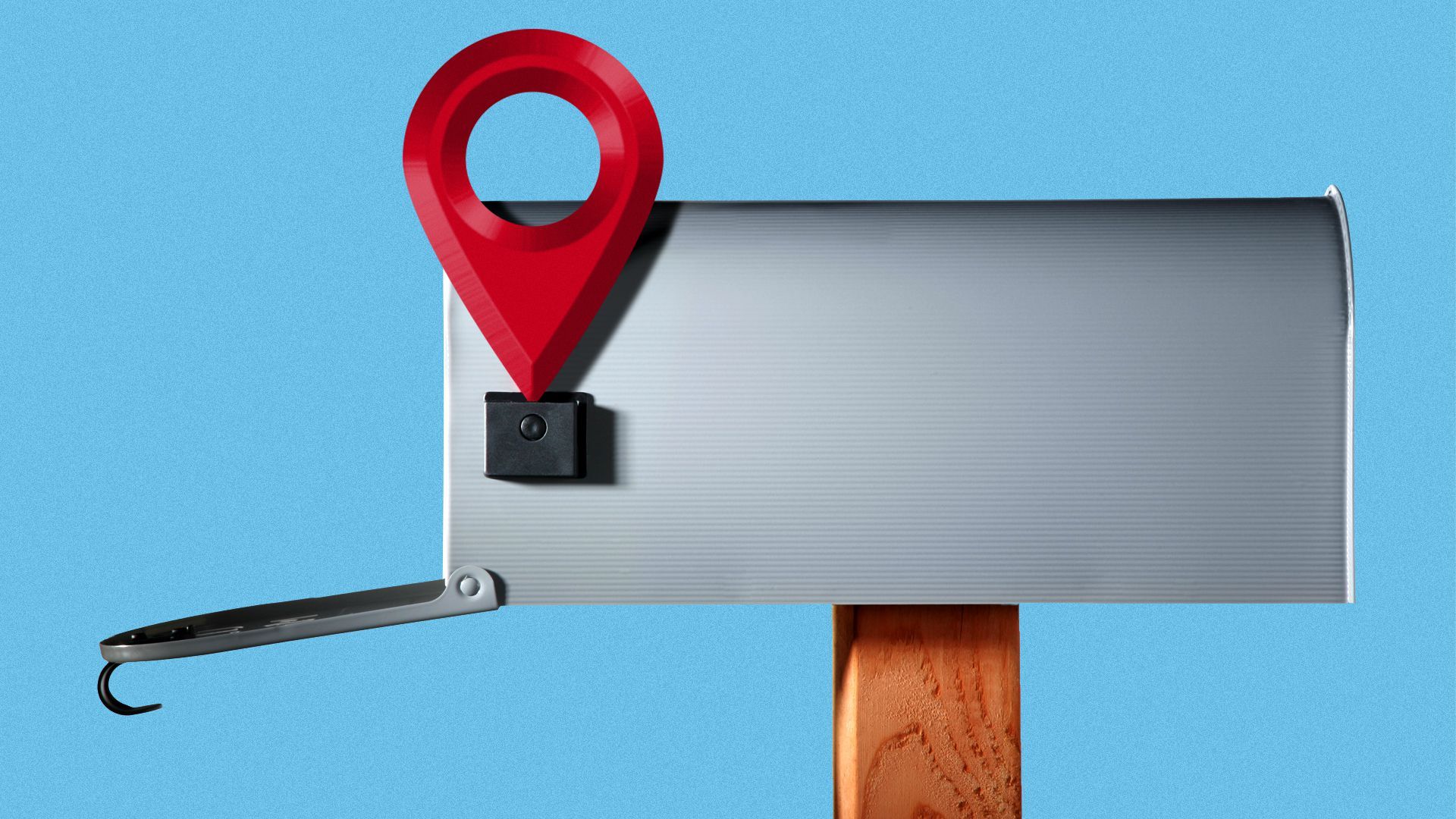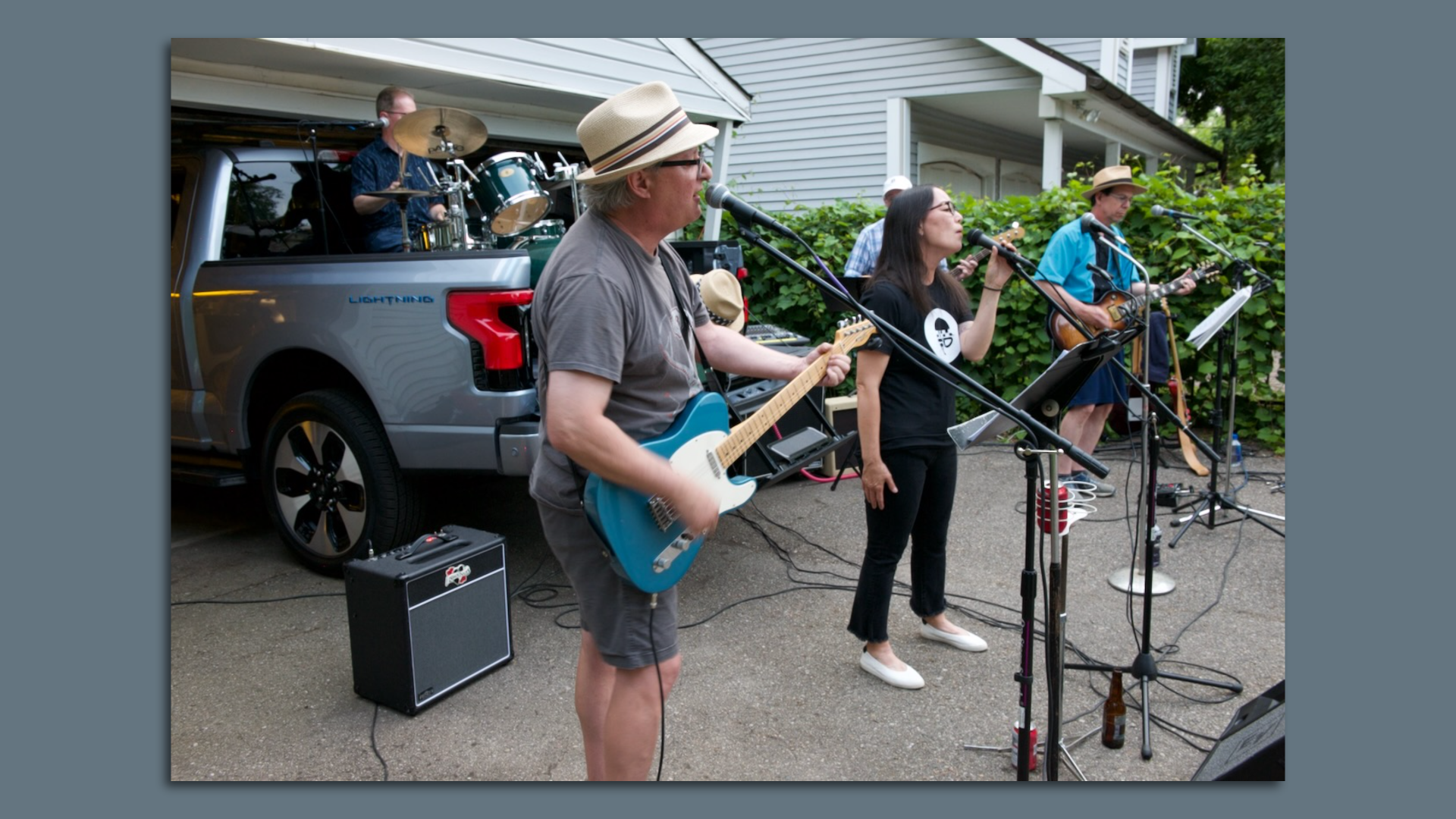| | | | | | | | | | | Axios What's Next | | By Jennifer A. Kingson, Joann Muller and Alex Fitzpatrick · Jul 27, 2022 | | Never mind those paper straws — the next big thing is a straw (and a fork, and a bowl) you can eat, Jennifer reports today. Today's Smart Brevity count: 1,049 words ... 4 minutes. | | | | | | 1 big thing: Have your cake and eat the fork, too |  | | | Illustration: Maura Losch/Axios | | | | Eco-companies are pumping out cups, spoons and straws that you can eat after you use them, Jennifer A. Kingson reports. Why it matters: While the "edible" angle is a bit of a cheeky marketing hook, there's a serious trend here: A campaign to replace items considered biodegradable or recyclable with ones that are "home compostable." - "We're trying to revolutionize the way we eat our food by replacing single use plastic with edible cutlery," says the founder of Incredible Eats, Dinesh Tadepalli, whose company makes spoons and sporks in flavors like chocolate and oregano chili.
Details: New edible products, made from ingredients like rice and sugar, include strawberry-flavored drinking straws for your smoothie (or margarita), oat-and-grain coffee cups (in regular or chocolate), and black pepper-flavored spoons that pair well with soup or mac and cheese. Driving the news: Edible utensils and tableware are starting to crop up at major retail, dining and entertainment chains. - Disney, Busch Gardens, Carnival cruises and Tropical Smoothie Cafes offer Sorbos edible straws. "You will soon see our straws in thousands and thousands of fast-food restaurants in the U.S.," Ove Fondberg, a co-owner of Sorbos, tells Axios.
- T.J. Maxx, Marshalls and Home Goods are selling Incredible Eats spoons.
- Lavazza coffee is being served in edible cups from Cupffee.
The big picture: While companies and governments have been banning or phasing out single-use plastics, many alternatives aren't much better for the environment. - Even biodegradable products can take a long time to decompose, and most recyclables aren't actually recycled.
- The brass ring: "home compostable" items, which don't require the high temperatures or professionally managed conditions of an industrial or commercial composting facility.
Yes, but: Edible straws, cups and utensils are a lot more expensive than conventional ones — which means restaurants either have to charge for them or build them into their prices. - Plus, edibles tend to dissolve (or get mushy or weird) after too much contact with food or drink.
- The forks and knives don't cut or stab too well, reviewers say.
- And some taste better than others.
The bottom line: It's not an easy business to get right. Several startups have already gone bust because it's tricky to manufacture edible straws, cups and utensils at scale and get retailers to pay extra for them. - But some companies are figuring it out, and there's consumer interest in the sustainability angle and "fun" factor — meaning we're likely to see a lot more of these products going forward.
Read the full story. |     | | | | | | 2. Millennials are staying close to home |  | | | Illustration: Shoshana Gordon/Axios | | | | The vast majority of young adults in the U.S. live within a stone's throw of where they grew up, per new Census Bureau/Harvard University research, Alex Fitzpatrick reports. Why it matters: It's yet another data point suggesting young Americans are staying relatively close to home rather than striking out on their own, in part due to economic forces. By the numbers: By age 26, 80% of young adults live fewer than 100 miles from where they grew up. - 90% live fewer than 500 miles.
Mobility breaks down along racial and socioeconomic lines too. - Black and Hispanic people live closer to their hometown than other groups, per the study.
- And "distances traveled rise rapidly at the top of the income distribution, increasing to an average of 325 miles for those born to families in the top 1%."
The big picture: Those who can afford to live far from home have an easier time accessing opportunities in far-flung, economically healthier cities. Share this story. |     | | | | | | 3. We're all either sick, or sick of work |  Note: Surveys of Americans who say they are not working because they have or are caring for someone with COVID-19 were conducted weekly through July 21, 2020, and biweekly thereafter. Surveys of Americans who are taking vacations from work are conducted monthly. Data: U.S. Census, Bureau of Labor Statistics; Chart: Erin Davis/Axios Visuals Many U.S. workers are calling out sick as the BA.5 COVID-19 variant spreads, while lots of others are turning on their out-of-office messages, Axios' Oriana Gonzalez reports. By the numbers: Between June 29 and July 11, nearly 3.9 million people in the U.S. said they did not work because they were either sick with coronavirus symptoms or were caring for a sick loved one, according to Census Bureau data. The summer of "revenge travel" is also upon us, stretching companies even thinner as Americans make up for pandemic-related cancelations. - Nearly 4.8 million people took time off during the week that the Census Bureau did its June household survey. During the same period in 2021, around 3.7 million were taking time off.
Read the rest. |     | | | | | | A message from Axios | | NEW: Subscribe to Axios Communicators | | |  | | | | Get the latest topics and trends impacting the way leaders, organizations and employers communicate. Why it matters: Axios Communicators will help inform your strategy and offer insight into the rapidly evolving world of sharing and receiving information. Subscribe for free | | | | | | 4. Streaming's new milestone |  Data: Nielsen; Chart: Erin Davis/Axios Visuals Streaming made up one-third of U.S. television consumption last month, per Nielsen — the highest percentage since the media measurement firm began its monthly report in June 2021, Axios' Sara Fischer reports. - Cable and broadcast saw their lowest-ever share of the television audience, although they still make up the vast majority of TV viewing.
Details: Time spent streaming has jumped 23.5% in the past year — a sign that consumers are still migrating to digital TV in droves. - Netflix remained the top streaming platform, likely thanks in part to the latest season of "Stranger Things."
Read the rest. |     | | | | | | 5. One fun thing: Keep on rockin' in the E-world |  | | | Members of the Exhaust Tones garage band, powered by Ford's F-150 Lightning electric pickup truck. Photo: Bill Rapai for Axios | | | | Ford's electric F-150 Lightning pickup made an unexpected appearance at Joann Muller's recent birthday party — and even powered the band providing the entertainment. The big question: Could the Lightning power a night of rock 'n' roll and still leave enough juice for the band to drive home? The Exhaust Tones, a band formed by a bunch of Detroit auto writers, have played Joann's backyard venue before. - This time, Autoweek executive editor Tom Murphy proposed a crazy idea: Why not put a Lightning on loan from Ford to good use?
- Instead of plugging their equipment into her garage, they ran everything off the truck's 9.6-kW Pro Power Onboard system.
They pulled the pickup halfway into Joann's garage, then plugged two giant PA speakers, three monitors, four amps, a 12-channel mixing board and a guitar pedal into the bed. - After tripping the truck's breakers, they spread out the power draw to take full advantage of the Lightning's multiple outlets.
The bottom line: Three hours of rockin' consumed barely a trickle of the truck's stored power. - The Lightning had almost 80% of remaining battery range when the band arrived. When they packed up for the drive home, it was at 75% — or 241 miles of range.
Go deeper: Read Tom's full account in Autoweek. Share this story. |     | | | | | | A message from Axios | | NEW: Subscribe to Axios Communicators | | |  | | | | Get the latest topics and trends impacting the way leaders, organizations and employers communicate. Why it matters: Axios Communicators will help inform your strategy and offer insight into the rapidly evolving world of sharing and receiving information. Subscribe for free | | | | A hearty thanks to What's Next copy editor Amy Stern. Was this email forwarded to you? Get your daily dose of What's Next magic by signing up here for our free newsletter. |  | | Are you a fan of this email format? It's called Smart Brevity®. Over 300 orgs use it — in a tool called Axios HQ — to drive productivity with clearer workplace communications. | | | | | | Axios thanks our partners for supporting our newsletters. If you're interested in advertising, learn more here.
Sponsorship has no influence on editorial content. Axios, 3100 Clarendon Blvd, Arlington VA 22201 | | | You received this email because you signed up for newsletters from Axios.
Change your preferences or unsubscribe here. | | | Was this email forwarded to you?
Sign up now to get Axios in your inbox. | | | | Follow Axios on social media:    | | | | | |










No comments:
Post a Comment